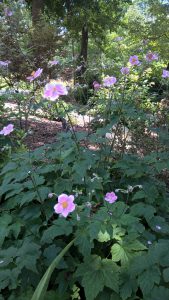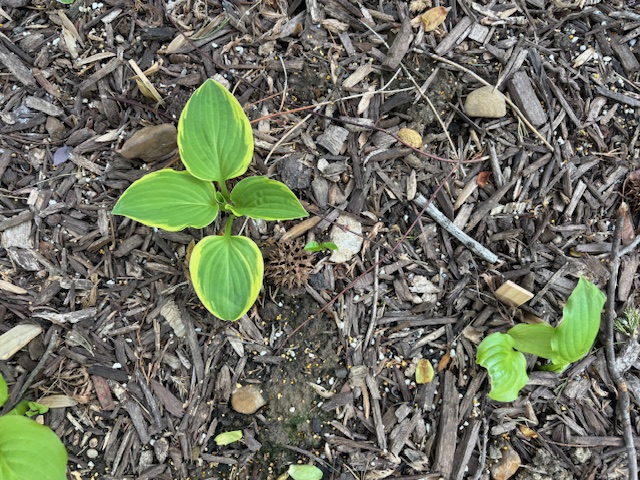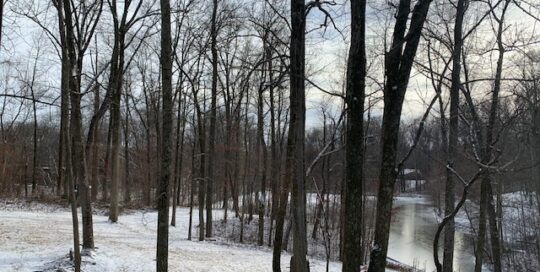Robustissima Anemones (Grape Leaf Anemones/Windflowers)
Views: 4524

About the same time I planted the “Little Henry” Itea (see ‘Creeping Beauty’), I also planted one, just one, only one “Robustissima” anemone (Anemone tomentosa “Robustissima”).
Since the name included the word “robust”, I thought, “Hey! Maybe this will grow!” Wow, did it GROW! Another ‘creeping beauty’, for sure.
The literature I’ve read suggests it can take more sun than most anemones and likes moisture. Some comments I’ve read say they do just fine in full sun, especially in more Northern gardens. I’ve also read that it’s also called “grape leaf anemone”, a “Japanese anemone” or a “windflower”; take your pick.
Growing
Its dark green leaves do look a bit like grape leaves, but instead of growing on a vine, the leaves rise from a ground level base (basal). Hardy in Zones 4 to 7, it’s been very happy (too happy) in my Zone 6b. I planted it in a part sun / part shade area and gave it no special attention, other than mulching it heavily (more to discourage weeds than for any other motive) and spreading some Osmocote around this spring. Now, my one plant has multiplied by underground rhizomes and where there used to be one plant, I have dozens.
I dug up a few of the babies this spring and moved them to a north-facing bank, which needs something pretty. I watered the transplants in, but beyond that, I’ve ignored them. They’re doing fine. I’ll move some more later this fall to the same bank – I didn’t know this, but they can be used as a groundcover.
I failed to mention the nicest part of the Robustissima; when it blooms in late summer to early fall, the wiry flower stalks grow much taller than the basal leaves. The gorgeous pink blooms are quite prominent as they sway in the breeze (maybe that’s why it’s called “windflower”). When everything else is pretty much tired of summer and waiting for cool weather to go dormant, these beauties are really putting on a show. Since the blossoms are attractive to butterflies and other pollinators, Robustissima is a season extender, too.
Once the blooms are finished, the fluffy seed heads look like tiny white blooms all winter long; just a bit of pretty detail during the drab winter.
You can’t really dislike a plant that’s so beautiful, so easy-care, and grows so well. Just plant them where you can and let them grow. I’ll probably be pulling up ‘volunteers’ for years, but that’s OK…maybe I’ll find another place to plant them.
Stay Green, good friends
Meet Dona Bergman
Dona Bergman is a founding member, Southwest Indiana Chapter of the Indiana Native Plant & Wildlife Society, and an Advanced Master Gardener.







